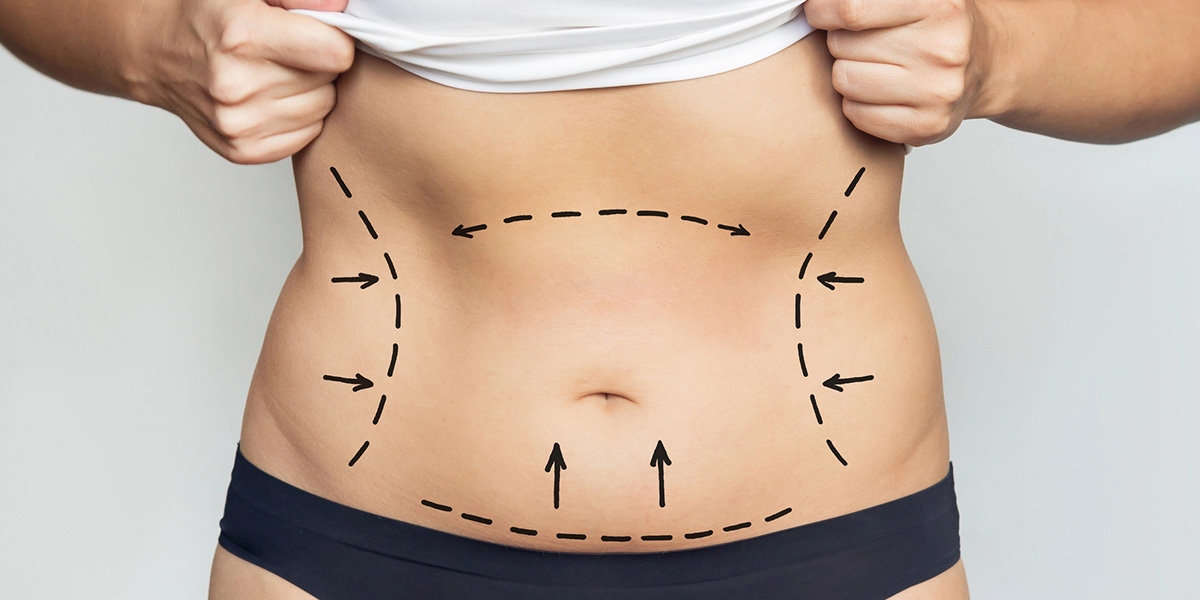Deciding when to get breast reduction can be a transformative step toward improving both your physical health and emotional well-being. As a leading plastic surgeon in NYC, I encounter many patients who suffer discomfort and self-consciousness due to overly large breasts. This procedure is not only about aesthetic enhancement—it is often a necessary solution to physical and psychological burdens.
Understanding Breast Reduction
Breast reduction surgery, also known as reduction mammoplasty, entails removing surplus glandular tissue, breast fat, and skin to reduce breast size to a more proportionate scale for your body and to get rid of the discomfort that comes with breasts that are too large.
When to Get Breast Reduction
- Physical Discomfort
One of the primary reasons individuals opt for breast reduction is physical pain. Large, heavy breasts can lead to chronic back, shoulder, and neck pain. Excessive weight can strain musculature and lead to long-term skeletal issues, making everyday activities painful and challenging. If you find yourself experiencing persistent pain in these areas, it might be time to consider how reducing breast size could significantly improve your quality of life.
- Skin Issues
Another indicator for considering a breast reduction is if you frequently suffer from skin irritations under the breast crease. The trapped heat and moisture in these areas can lead to painful rashes and other skin infections. Regular occurrences of such conditions can not only be uncomfortable but also lead to more severe skin problems if not addressed.
- Lifestyle Limitations
Large breasts can also severely impact your lifestyle, restricting your ability to engage in physical activities such as running or aerobics due to discomfort and excessive movement. For those who lead an active lifestyle, this can be particularly frustrating and limiting. If your breast size is a barrier to participating in sports or performing daily activities comfortably, a breast reduction may be advisable to restore your mobility and active lifestyle.
- Emotional and Social Impact
Beyond the physical implications, overly large breasts can also have a profound emotional and social impact. Many individuals experience self-consciousness and may withdraw from social situations or avoid certain types of clothing. Moreover, unwanted attention directed at one’s chest can be distressing and lead to diminished self-esteem.
Insurance and Breast Reduction
Many individuals are unaware that their health insurance may cover breast reduction surgery if it is considered medically necessary. Insurance companies often require documentation of physical symptoms and proof that non-surgical treatments have been ineffective in alleviating pain or other issues related to large breasts. Discussing this with a knowledgeable breast reduction specialist can offer clarity on the qualifications needed for coverage.
Preparing for Breast Reduction Surgery
Embarking on the journey toward breast reduction starts with thorough preparation and understanding of what the surgery entails. The preparation is not only about guaranteeing your body is ready for the procedure but also about setting expectations for the outcomes and recovery process.
- Consultation and Expectations
The initial step in preparing for breast reduction surgery is a comprehensive consultation with your surgeon. During this meeting, you will discuss your medical history, current health status, and the physical discomforts you experience. It is crucial to be open and honest about your medical history and any medications you take, as these can influence both the procedure and your recovery.
Your surgeon will also examine your breasts, taking measurements and possibly photographs for your medical record. This examination helps in planning the surgery and tailoring it to your specific body shape and desired outcomes. During this time, discuss your expectations openly. A good surgeon will help set realistic goals based on your body’s anatomy and explain what breast reduction can and cannot achieve.
- Mental and Emotional Preparation
Mental and emotional preparation is equally important. Knowing the changes that will occur and preparing for the impact on your body image is essential. Many patients experience a significant boost in self-esteem and comfort after surgery, but adjusting to your new appearance can take time.
- Physical Preparation
In terms of physical preparation, your surgeon may advise you to complete specific lab tests or medical evaluations before the surgery. You might also need to adjust your current medications or take new ones to prepare for the procedure. It is typically recommended to stop smoking well in advance of the surgery, as smoking can significantly slow down the healing process.
Additionally, arranging for help during your recovery period is crucial. You will need someone to drive you home after the procedure and stay with you for at least the first night. Preparing your home for a comfortable recovery—stocking up on easy-to-prepare meals, setting up a recovery area with all necessities within easy reach, and ensuring you have plenty of pillows to prop yourself up—can make a big difference in your post-operative comfort.
- Day Before Surgery
The day before your surgery, follow any guidelines provided by your surgeon regarding eating, drinking, and medications. These instructions are designed to prepare your body for anesthesia and surgery, reducing the risk of complications. Make sure you have everything you need for a smooth and comfortable return home after the procedure.
- Understanding the Procedure
Breast reduction surgery is typically done under general anesthesia and takes about two to four hours, depending on the extent of the reduction. The most common technique involves making incisions around the areola and down each breast. Excess fat, glandular tissue, and skin are removed, and the nipples may be repositioned to create a natural appearance for smaller breasts. Your surgeon will explain the specific techniques that will be used in your case.
- Post-Surgery Expectations
Immediately following surgery, your incisions will be covered with bandages or dressings, and you will typically be fitted with an elastic bandage or a supportive bra. It is done to reduce swelling and to provide support to your breasts during the healing process.
It is normal to experience pain, swelling, and sensitivity during the first few weeks. Your surgeon will prescribe medications to alleviate any discomfort and will give you detailed instructions on how to care for your breasts throughout the recovery period.
Navigating Recovery After Breast Reduction Surgery
- Immediate Postoperative Care
After breast reduction surgery, you will be taken to a recovery area where medical staff will monitor your initial recovery from anesthesia. You might feel groggy and tired, which is normal. Pain can be present, but it will be managed with medications prescribed by your surgeon.
Before you leave the hospital or clinic, you will receive comprehensive instructions on caring for your surgical sites, medications to apply or ingest to facilitate healing and minimize the risk of infection, and information on scheduling follow-up appointments with your surgeon.
- Home Recovery Tips
Once home, it is essential to have a comfortable recovery space set up where you can relax without needing to move too much. Keep necessary items like medications, water, snacks, and entertainment within easy reach. Sleeping in a slightly elevated position can help reduce swelling and discomfort.
You should avoid any strenuous activities, especially lifting heavy objects or any exercises that involve bouncing or vigorous movement. Light walking around your home is encouraged to help circulation and prevent blood clots.
- Managing Pain and Discomfort
Pain and discomfort are most significant in the first few days post-surgery but should gradually improve. Take pain medication as prescribed by your doctor, and use ice packs to help manage swelling. It is crucial to follow your surgeon’s advice closely regarding pain management and to contact them if the pain becomes unmanageable or if you notice any signs of complications.
- Follow-Up Visits
Attending follow-up visits with your surgeon is essential. These appointments allow your surgeon to monitor your healing and make sure that your incisions are healing properly. These visits are also an opportunity to address any concerns you might have about your recovery and the results.
During these visits, your surgeon will advise when it is safe to resume normal activities, including exercise, and will provide guidance on how to support your breasts as they heal. Typically, patients can return to work within a few weeks, depending on the nature of their job and their recovery progress.
- Long-Term Care and Monitoring
The final shape of your breasts will settle over several months. Swelling will gradually decrease, and incision lines will fade. During this time, it is important to maintain a stable weight, as significant weight fluctuations can alter the results of your surgery.
Regular self-examinations and routine check-ups with your surgeon are recommended to monitor the health of your breasts. Additionally, continue practicing good skin care to help maintain the results of your surgery and overall breast health.
- Supportive Garments
Wearing a supportive bra without an underwire is crucial during the recovery phase. Your surgeon will recommend a suitable garment that supports the new breast shape and aids in healing. It is generally advised to wear this type of bra full-time for a specified period post-surgery.
- Emotional Adjustments
Alongside physical recovery, adjusting to your new body image can take time. Many patients experience a boost in self-esteem and relief from physical symptoms, but it is normal to go through a range of emotions as you adapt. Support from friends, family, or a counselor can be beneficial.
Breast reduction surgery can dramatically enhance your quality of life, relieving physical discomfort and improving body confidence. Remember, a successful recovery requires patience, adherence to your surgeon’s advice, and a positive outlook toward your new physical form.
At Dr. Brad Gandolfi, we specialize in breast reduction surgery in NYC, including breast reduction, breast lift, breast revision, and more, led by double board-certified Dr. Gandolfi. Combining artistic expertise with advanced surgical techniques, we focus on achieving natural-looking results tailored to each patient. Our practice is dedicated to offering personalized care and guaranteeing an exceptional patient experience that consistently exceeds expectations.





